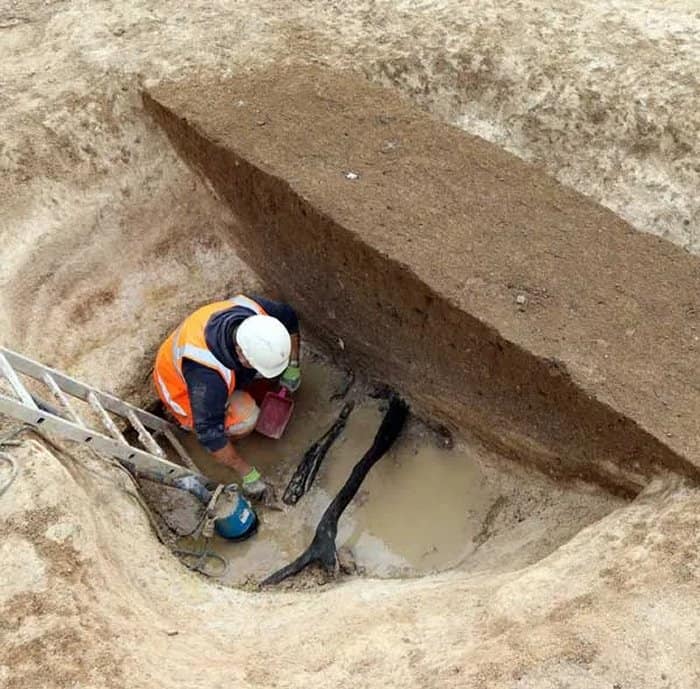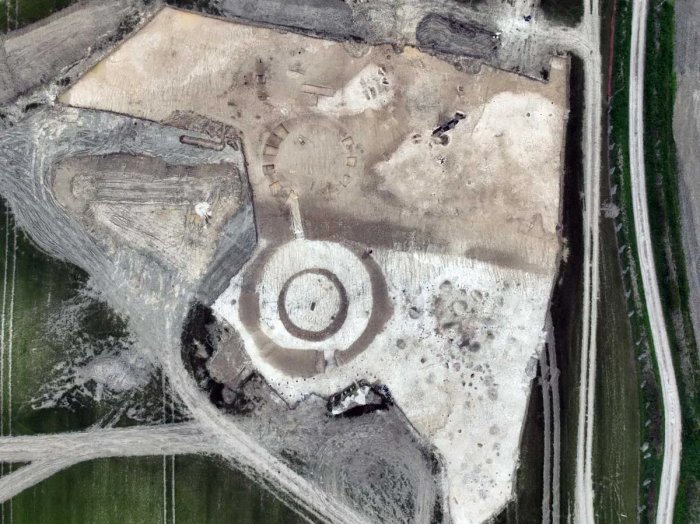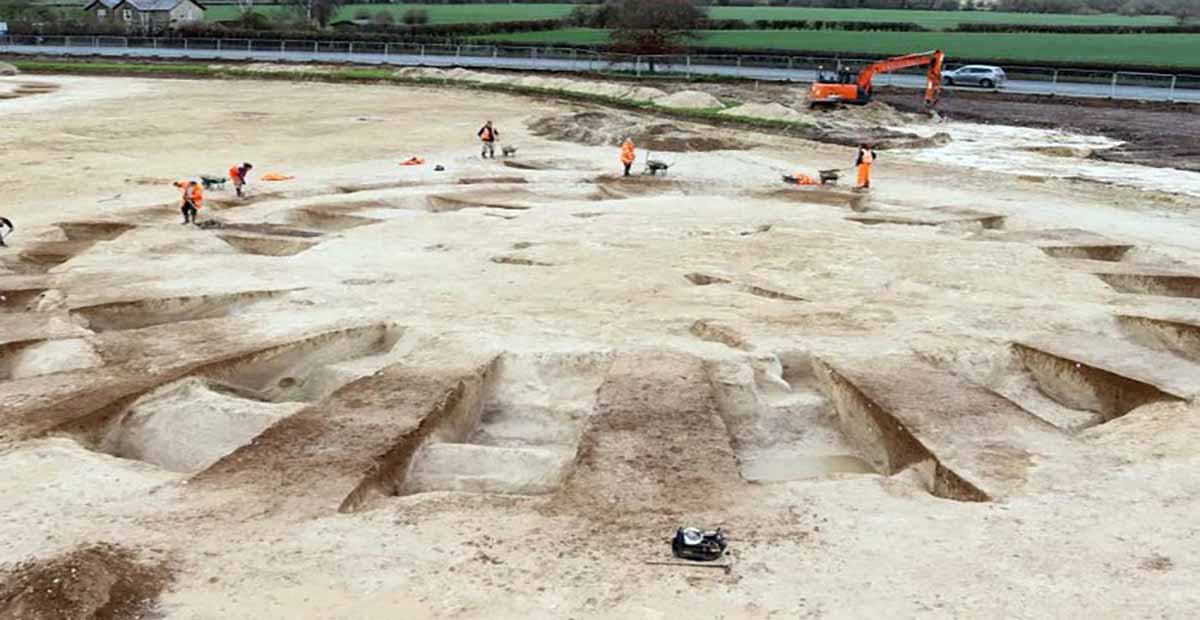Giant Bronze Age Barrow Cemetery Discovered In Salisbury, England
Archaeologists excavating at Netherhampton Road, on the edge of Harnham, a southern suburb of Salisbury, England have unearthed a giant Bronze Age barrow cemetery.
Wiltshire is well known for its Bronze Age barrows, especially those that survive within the landscape of the World Heritage site of Stonehenge and on the chalklands of Cranborne Chase. In contrast, little is known of similar sites that existed closer to the medieval city of Salisbury. The discovery of a new huge Bronze Age barrow cemetery has provided scientists with a new opportunity to study these ancient burial places.
Round barrows were first constructed in the Neolithic period, although most were built during the Beaker and Early Bronze Age (2400 – 1500 BC), and usually consist of a central burial, a mound, and an enclosing ditch. Their size can vary from less than 10m in diameter to an impressive 50m, although most average 20-30m. Their earthworks vary too – some have large central mounds (‘bell barrows’), others small central mounds and outer banks (‘disc barrows’), and some have central hollows (‘pond barrows’). Creating their ditches would have provided material to help make the barrow mound, which would have been built from chalk, topsoil, and turf. Barrows tend to be associated with burials – some contain only single individuals, others a sequence of burials and occasionally multiple burials.
“The barrows uncovered at Netherhampton Road had all been levelled by centuries of cultivation and so remain only as ditches but, fortunately, ten burials and three un-urned cremations have survived. Our cemetery is made up of about twenty or more barrows that spread from the very edge of Harnham on the Nadder valley floor, up and across the adjacent chalk hillside on what is the northern edge of the landscape of Cranborne Chase. The cemetery is arranged in small clusters of barrows – either pairs or groups of six or so – and we’ve so far excavated just five. At least three of our barrows are multi-phased – two had been substantially enlarged and one had started out with a slightly oval ditch that was later replaced by a near-circular ditch.

The oval shape suggests this latter barrow could have been Neolithic, or possibly built in an area of Neolithic activity. Near its centre was a mass grave containing the skeletal remains of adults and children – such graves are rare and, in the absence of grave goods, it will be targeted for radiocarbon dating. The barrow revealed two further graves, both of which held Beaker burials that were probably created at the start of the Bronze Age.
The oval barrow cut through Neolithic pits that contained a cache of red deer antlers. Deer antler was highly-prised and used for making hand-picks or sometimes attached to straight wooden handles to make pitchforks and rakes. It was also turned into combs and pins, tools, and weapons like mace heads and mattocks, or used as part of ritual activities. Our animal bone and worked bone specialists will look at these to see whether there are any observable traces of deliberate breakage or patterns of wear. These could suggest modification for use – for example, the burrs and tines can be used for flint knapping, as hammers, or for pressure flaking of flints to make tools.
The other two adjacent barrows contained no central graves, possibly due to damage from centuries of cultivation. Together, these three are part of a larger group of barrows with a further three or four visible as crop marks on the north side of Netherhampton Road.
Saxon remains were also found in this area of the site, and include a possible sunken-featured building – perhaps used as a hut, workshop, or store – and a waterhole. In the base of the waterhole, the team discovered worked timbers, which had been preserved by waterlogging, as well as Saxon pottery, iron knife blades, and a piece of possibly collected Roman pottery.

The second area revealed a cultivation terrace (‘lynchet’) of probable late Iron Age date – relatively rare in Wiltshire – and an area of late Bronze Age to Iron Age settlement, made up of over 240 pits and postholes. The pits had mostly been used for the disposal of rubbish, although some could have been for the storage of cereal grain; the material recovered from these pits will provide evidence for how this community lived and how they farmed the land,” the Cotswold Archaeology team reports.
Excavations conducted in Area 2 led to the discovery of remaining barrows.
Archaeologists say that “one consisted of a simple ditch cut into an early deposit of hill wash; cremation burials were found in and outside this ditch. The other barrow was cut into the chalk with its centre positioned on a slight break of slope, enhancing its visibility when viewed from the lower ground of the River Nadder valley.

At its centre was the inhumation burial of a child, which had been placed with a handled Food Vessel of ‘Yorkshire’ type, so called because of its ridged profile and level of decoration. As the name suggests, this type of vessel is more common in northern England and is a possible indication that people moved over long distances. Analysis of the isotopes of the skeleton may reveal whether the child was local to the area or had been brought up in a different region. Certainly, whoever made the pot buried with the child was familiar with pottery of non-local character.


This barrow also cut Neolithic pits containing a type of Late Neolithic pottery called Grooved Ware, which originated in various settlements on Orkney, around 3000 BC, before its wider adoption across Britain and Ireland.
It is also the type of pottery used by the builders of Stonehenge and the great henge enclosures of Durrington Walls and Avebury. These pit deposits often contain token amounts of broken and burnt material, the remains of feasts and the occasional unusual or exotic object.




